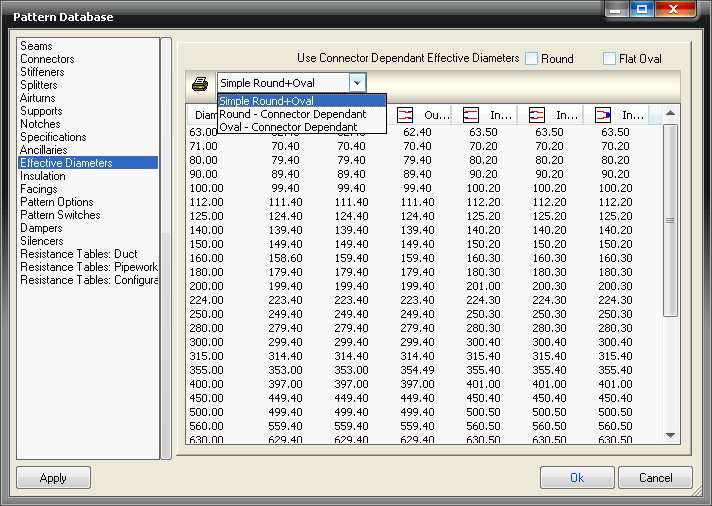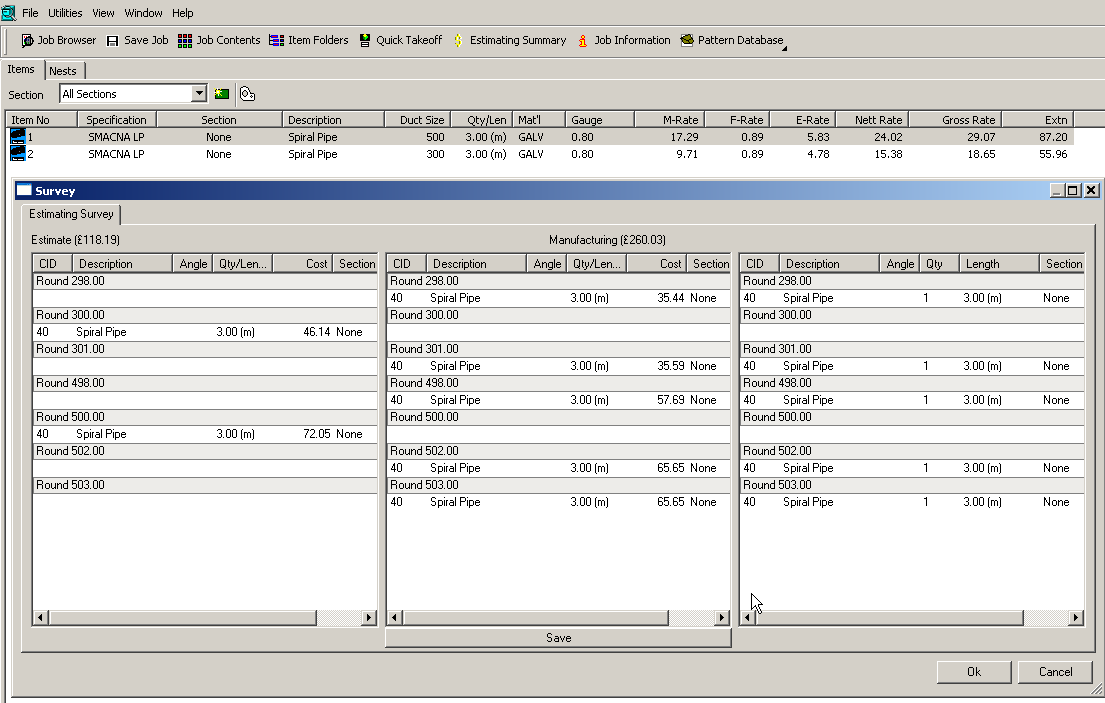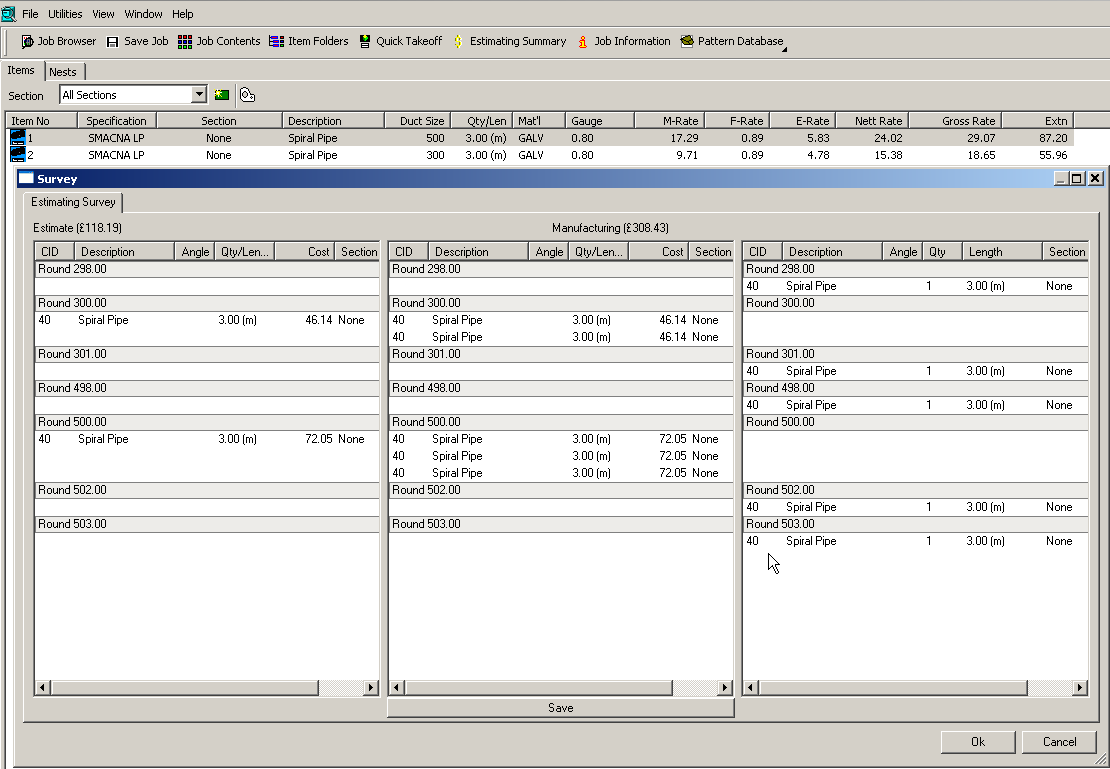The ESTduct / Surveying system uses the Effective Diameters table from within the Pattern Database to resolve differences between the nominal Diameters entered in Estimating and "actual" sizes entered in Manufacturing. The diagrams below illustrate how the Effective Diameters table affects the Surveying function:
Job Contents Screen of 'Base' Estimate

The base estimate contains 2 items of Spiral tubes at 300mm and 500mm respectively.
Job Contents Screen of 'Comparison' MAJ file

This file contains 5 items with a variety of "actual" fabrication diameters close to the nominal sizes held within the base estimate.
Standard Effective Diameters Table

In this 'default' table the Effective diameter sizes have not been altered to 'trap' the actual sizes that will be compared to the base estimate.
Example Survey Screen 1

As the effective diameter table has not been adjusted to trap similar sizes, the items in the comparison file are not matched to those in the base Estimate. Hence, the calculated rate for those items do not match up. This can clearly be seen in the Survey Screen image above and Job Contents screen below.
Job Contents Listing for Survey 1

Adjusted Effective Diameters Table

For the second example the settings for the 300 and 500 diameter entries have been adjusted to trap the "actual" sizes that have been entered in the comparison file.
It is important to use the same effective diameter table throughout and note that "Effective Diameters" activation switch should be OFF on the EST-Duct and Surveying systems.
Example Survey Screen 2

Using the 'adjusted' effective diameter table the items in the comparison file are matched to those in the base Estimate. Hence, the calculated rate for those items does match up. This can clearly be seen in the Survey Screen image above and Job Contents screen below.
Job Contents Listing for Survey 1

The 298 and 301 entries have been matched and converted to the 300mm item in the base estimate.
The 498, 502 & 503 entries have all been converted to the 500mm item in the base estimate.